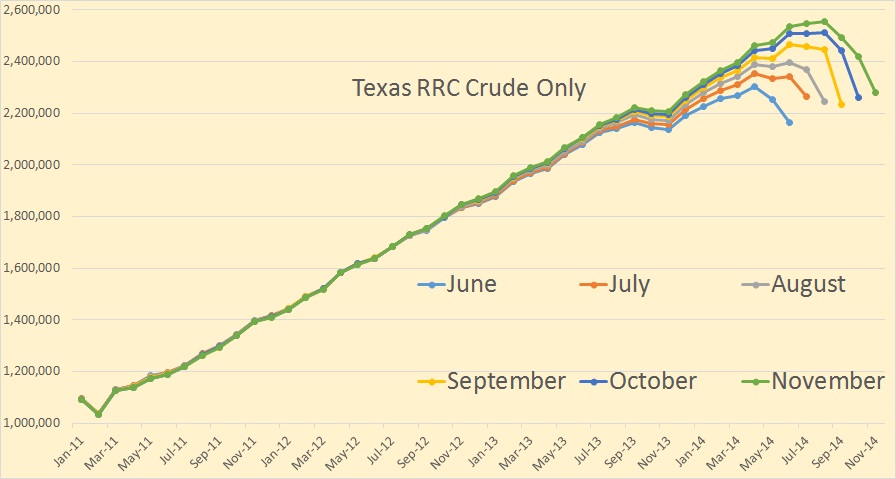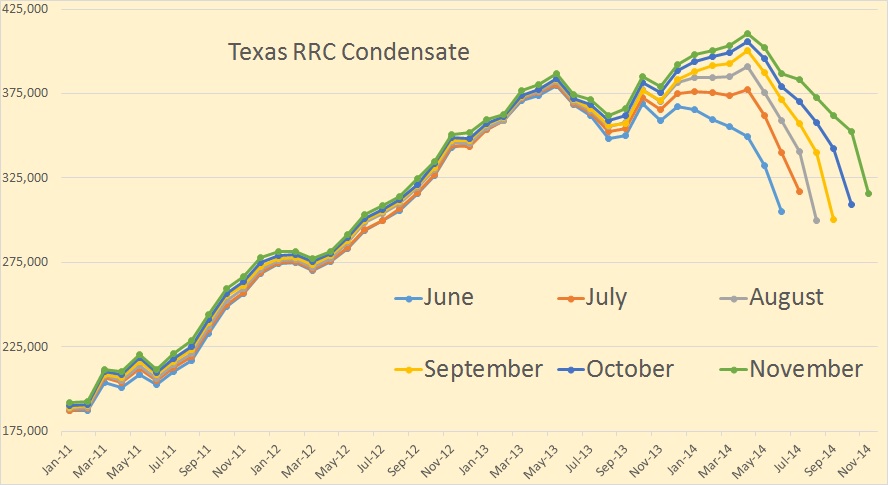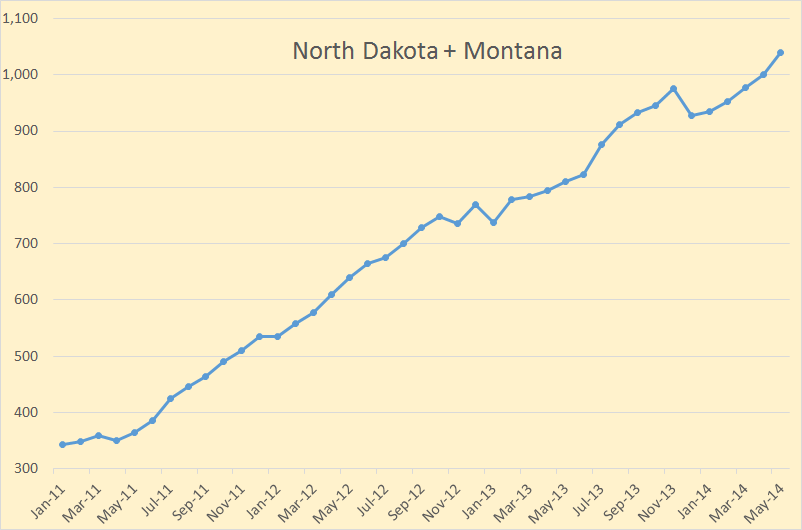The Texas Railroad Comission has released their oil and gas production data for November. As most of you know, the Texas RRC data is always incomplete. Some data is updated immediately but the rest trickles in slowly, sometimes taking many months to years to complete. Nevertheless we can glean some indication of what is happening from what data is reported. That is, if production is increasing, then the incomplete month to month data should be increasing. And it is, but very slowly.
The last data point in all charts below is November 2014 and the oil is in barrels per day.
Texas crude only is still increasing but the increase rate seems to be slowing down.
It is rather hard to tell what condensate is doing but the rate if increase, if any, seems to be slowing.



